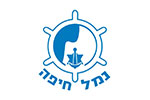Targets and quotas provide workers with a goal that they strive to achieve. In addition, they provide a baseline against which employees’ performance can be measured. When used correctly targets and quotas also serve to motivate employees to achieve more than they normally would thus increasing work quality and quantity. They also clarify employer expectations showing employees exactly what their employer expects from them.
There is a number of dilemmas that may have been encountered in when setting targets and quotas;
• Whether or not to set personal targets and quotas; personal targets and quotas influence the spirit of teamwork. As an employer you will notice that when you establish personal quota, your employees focus more at achieving their individual goals at whatever cost which might lead to unhealthy competition and downgrade the team spirit.
• How can we set achievable quotas; if you set unreachable goals or too demanding to your employees it ends up being counterproductive. We saw that unattainable targets and quotas leave the employees feeling like underachievers and putting them constantly under pressure to perform leaving us with stressed-out employees. In some cases it leads to a high employee turnover which will cost your business in terms of worker experience lost, work hours lost before the employee is replaced and the extra cost of hiring and training new employees.
You can avoid those dilemmas when setting targets and quotas for your employees by acting as follows:
• Involve all employees in setting the targets and quotas. Each employee will be then accountable for the targets they set and in most cases employees set higher targets than you would have set for them but which they know are achievable.
• Divide the long term goals into short term goals. By translating annual targets into monthly, weekly and daily targets, it will be easier for the employees to visualize and achieve. Also, instead of only focusing on the money part of the targets, employees can be encouraged to focus on the activities that will lead to getting the targets such as making the necessary calls.
• Recognizing and rewarding all the team members when quotas are achieved helps building the team spirit. Often, team spirit is destroyed by recognizing and rewarding only the team leader when targets are achieved forgetting the efforts of the entire team.
• The rewards offered to employees who achieve targets can be monetary or non-monetary (such as tickets to a game) can be quite motivating for entire team.
• Avoid setting common goals for all members of the team. Taking the annual target and dividing it equally among all the employees is a bad approach since different employees have differing capacities and capabilities. Using this method, you might end up assigning low targets to the high achievers which fail to motivate them while giving the less experienced or new employees unreachable targets. Each employee should be assigned targets that they can achieve but that are hard enough to motivate them to work hard.


























































